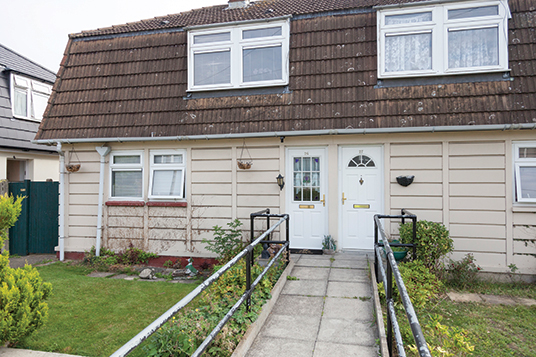Denise Freeman, Head of Marketing at Sto, looks at an immediate priority for the country’s housing stock.
However you look at it, the UK faces a major challenge to maintain, let alone improve, the quality of existing housing. The current government chose to focus on reducing the carbon impact of buildings and spent years refining funding mechanisms that could deliver improved insulation with the dual objectives of reducing carbon emissions and reducing fuel poverty.
CERT and CESP came and went and the Energy Company Obligation, of which much was expected, has also been decimated in the Chancellor’s Autumn Statement which effectively halved the targets for retrofitting insulation and extended the time frame for delivery.
However, whatever the current funding mechanisms in place – and the Autumn Statement does hold out the promise of a new fund to ensure carbon reduction targets are still met – the benefit of improving both the thermal efficiency and the appearance of existing housing is ensuring that the market for retrofitting external wall insulation is a growing one.
The project to refurbish the high-profile residential tower blocks on the Tamworth Estate in Old Trafford, Manchester epitomises this process.
When project architects PRP were engaged, the debate centred on whether the run-down, unpopular and very inefficient towers should simply be demolished. Project architect Fiona Sadler summed up the problems: “Although the buildings were structurally sound they suffered from problems including poor fabric thermal performance, poor heating and ventilation systems, a lack of security and no private outdoor amenity.”
As the structures were sound, it was concluded that the most sustainable option was to renovate and improve the blocks – work which needed to be completed while the tenants remained in situ.
An immediate priority was to improve the thermal performance of the building fabric and external wall insulation was the only viable solution. StoTherm Mineral external render, provided the answer, giving an impressive U-value of 0.16 W/m2K.
Improving the overall aesthetic of the Tamworth Towers was also a major consideration and so Sto-Brick Slips and StoLotusan Color self-cleaning façade paint were specified. Sto-Brick slips were used at the bottom of the towers in either white or black, giving a reassuringly robust surface applied over the insulating layer. Above ground floor level the insulation was finished with StoLotusan Color in white and grey. The self-cleaning paint ensures the Tamworth Towers will retain their sharp and bright aesthetic with little upkeep.
The refurbishment has undoubtedly boosted the appearance of the area. Fiona Sadler explained how “redeveloping the blocks has helped create a sense of ownership for the residents and generate a sense of pride in where they live”.
On a less eye-catchingly grand scale, there are millions of solid-wall houses, many constructed quickly in the decades immediately after the second world war and now in urgent need of attention.
Luton Borough Council is one of many social housing providers involved in a continuous programme of improvement for its housing stock. The most recent phase of this project involved the refurbishment of 150 Cornish-style pre-fabricated homes. Built from reinforced concrete, the only practical way of improving the energy efficiency of the building fabric is to apply external wall insulation.
A priority for the council is to ensure that the tenants are happy with changes being made to their homes and Sto was involved in a lengthy consultation process – going so far as to apply external wall insulation with two entirely different finishes to demonstrate the options available.
The final choice: StxTherm Robust provides effective insulation through the use of 90mm of Lambdatherm EPS insulation. Fast application is ensured by the adhesive fixing system which also requires no remedial work to the existing subframe. The target U-value was 0.27 W/m2K and the chosen aesthetic was a brick slip finish.
These projects are just two of thousands being completed throughout the UK. Improving the housing stock is an essential investment for UK plc while this type of refurbishment also helps ameliorate fuel poverty for some of the poorest families in the country. We see a positive future for projects of this type in the years ahead.


